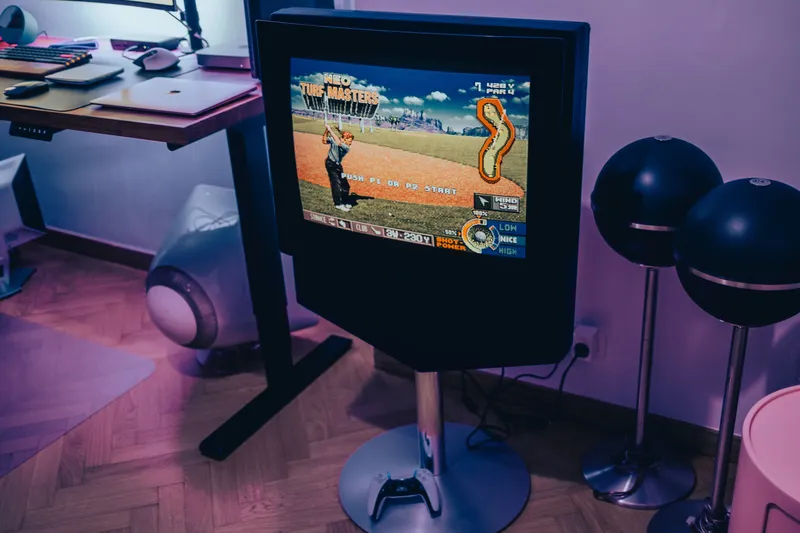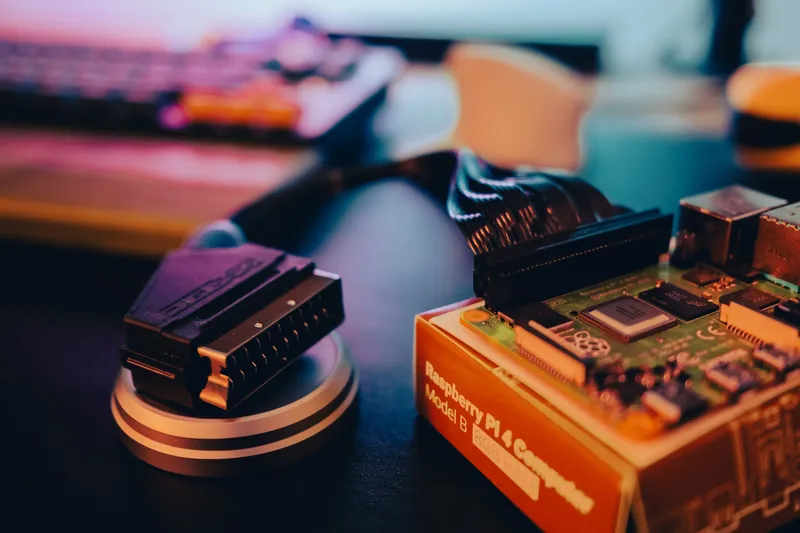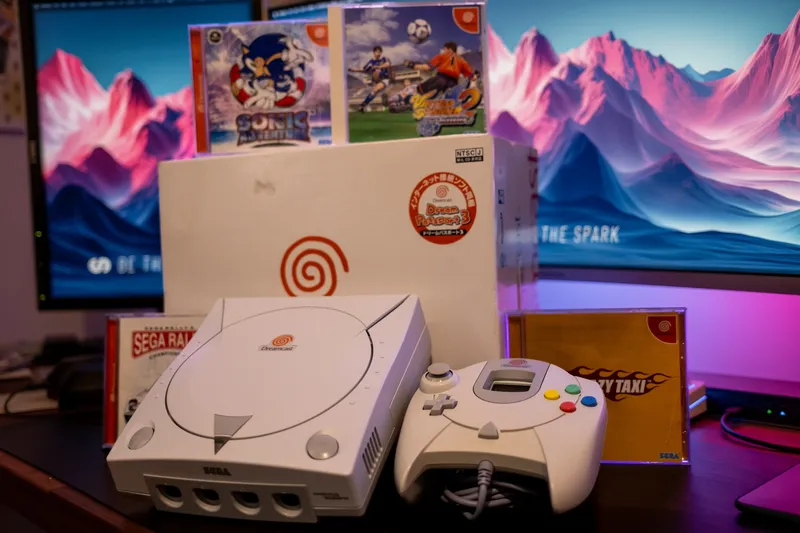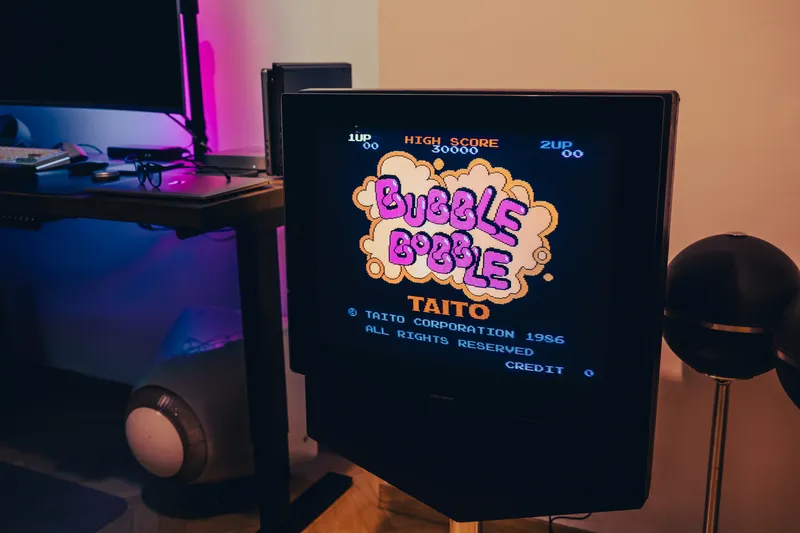The Hunt for a BeoCenter 1 and the RGB Pi Journey
Table of Contents
- The Hunt for a BeoCenter 1
- Unpacking the Icon
- Why SCART and RGB Matter
- CRTs vs Modern TVs: Why CRTs Still Matter
- The RGB-Pi Setup: Technical Insights and Considerations
- Building the Collection
- Why CRTs Are a Unique Experience
- Takeaways and Tips for Beginners
1. The Hunt for a BeoCenter 1
For years, I’ve been captivated by the intersection of design, nostalgia, and technology. As a vinyl collector and retrogaming enthusiast, the allure of vintage devices with unique aesthetics is irresistible. So when I stumbled across a listing for a fully functional Bang & Olufsen BeoCenter 1, my heart skipped a beat.
This wasn’t just any CRT TV—it was an icon of Danish design and engineering. And for me, this was not just about creating a great emulation experience; it marked the beginning of a larger project: building a collection of vintage consoles.
Finding a BeoCenter 1 in working condition is no small feat. Many units, even if operational, are plagued by aging CRTs, broken remote controls (those Beo4 remotes are essential!), or issues with the motorized stand. However, this particular unit appeared to be in excellent condition, making it an opportunity I couldn’t resist.
Logistics, however, were a challenge. At nearly 60 kg, this thing wasn’t light. Could I transport it without damaging it or my back? With the help of a trusty friend, I managed to bring this beast into my studio without a hitch.
2. Unpacking the Icon
Once home, I carefully unboxed the BeoCenter 1. Its minimalist design was striking even after all these years. The TV came with built-in speakers, DVD playback, and that signature brushed aluminum finish. After cleaning it meticulously, I powered it on for the first time.
The motorized stand rotated towards me as if welcoming its new owner. The CRT flickered to life with that warm, slightly buzzing glow that only an analog device can produce. It was perfect.
But I didn’t buy this TV just to watch DVDs. It was destined for something far nerdier: retrogaming.
Finding Manuals and Support
The BeoCenter 1 is a unique device, but without the manual, it can be challenging to configure and understand all its features. To make it easier for anyone looking to embark on a similar journey, I’m linking here four key resources:
- Beo4 Manuale (italiano)
- BeoCenter 1 Reference Book (English)
- BeoCenter 1 Reference Book (Italian)
- BeoCenter 1 Service Manual
These documents include everything from basic operation to in-depth technical guidance, including servicing and troubleshooting. If you don’t have the Beo4 remote, note that configuration and setup will be nearly impossible, as it’s the only way to navigate the menus effectively.
Additionally, the BeoWorld’s BeoCenter 1 page and other online communities dedicated to Bang & Olufsen are invaluable resources for troubleshooting and advice.
3. Why SCART and RGB Matter
For those who are serious about retrogaming on a CRT, SCART RGB is the holy grail of video output. SCART supports RGB signals, keeping the red, green, and blue components of the video separate for crystal-clear images and vibrant colors.
Why RGB Is Superior
- Signal Clarity: Composite signals (yellow cables) mix all video information—color, brightness, and sync—into a single stream. This leads to fuzzy images and color bleeding. SCART RGB keeps these components separate.
- Native Resolution Support: Retro consoles often output at 240p, which CRTs handle natively without scaling artifacts or lag.
- No Input Lag: CRTs process the signal in real-time, unlike modern TVs, which introduce lag through upscaling and image processing.
For a deeper dive into CRT technology, I recommend watching this video by The 8-Bit Guy or the RetroRGB CRT History documentary.
4. CRTs vs Modern TVs: Why CRTs Still Matter
In a world dominated by ultra-thin 4K OLEDs and QLEDs, why would anyone opt for a bulky, heavy CRT from decades ago? The answer lies in the fundamental differences between the two technologies and how those differences impact retro gaming.
CRT Advantages Over Modern TVs
- Native Resolution and Scaling: CRTs adapt perfectly to the low resolutions of retro consoles, avoiding the blurry upscaling of modern TVs.
- Input Lag: CRTs offer instantaneous response times, critical for fast-paced retro games.
- Scanlines and Visual Aesthetics: CRTs produce natural scanlines and vibrant visuals, making pixel art look alive.
- Refresh Rates and Motion: CRTs display fluid animations without the motion artifacts or tearing of modern TVs.
5. The RGB-Pi Setup: Technical Insights and Considerations
To get the most out of the BeoCenter 1, I paired it with a Raspberry Pi 4 and the incredible RGB-Pi SCART cable. While the setup delivers an unparalleled retro gaming experience, there are some technical aspects to keep in mind.
Preparing the Raspberry Pi
I used a 256GB microSD card—not because it’s necessary, but to allow for a large collection of games.
The installation of RGB-Pi OS is straightforward:
- Download the OS image from the official website.
- Flash the image onto a microSD card using a tool like Balena Etcher.
- Insert the SD card into your Raspberry Pi, connect the RGB-Pi cable, and boot up.
That’s it! On first boot, you’ll be greeted by an intuitive interface ready to play. Remember to have a USB controller or keyboard handy for initial setup, and you can configure Bluetooth controllers later if needed.
The entire process is quick and designed for ease of use, making it accessible even for beginners.
6. Building the Collection
ZX Spectrum: Where It All Began
The ZX Spectrum is where my story in computing began. As a child, this machine captivated me, igniting my passion for technology and programming. Created by Sir Clive Sinclair and launched in 1982, the ZX Spectrum was a revolutionary home computer that democratized computing in the UK and beyond. With its rubber keys and compact design, it became a cultural icon, shaping an entire generation of developers and gamers.
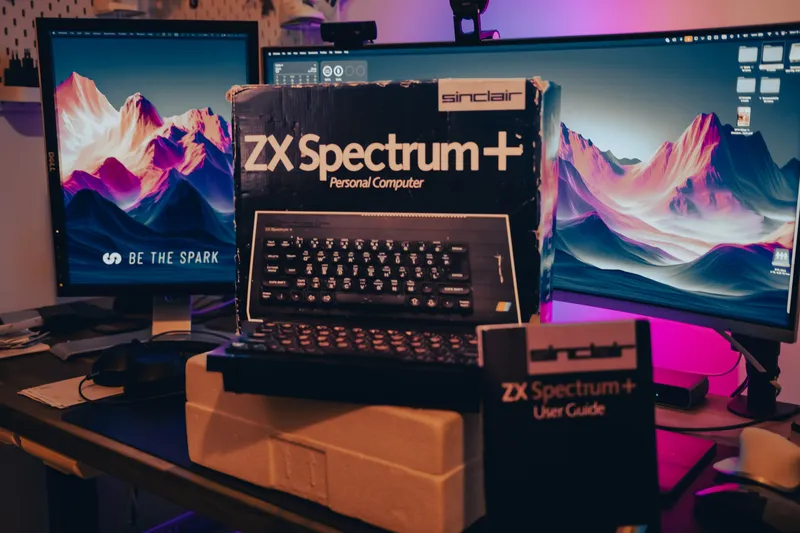
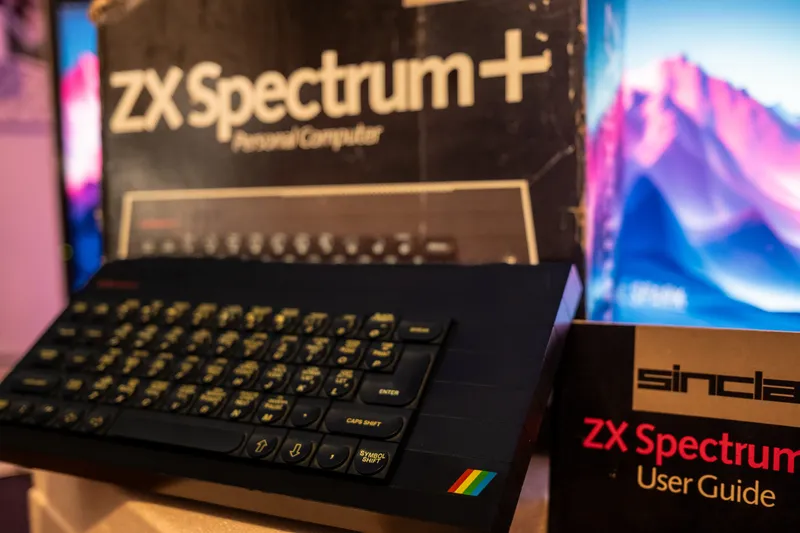
Owning one now feels like reconnecting with the roots of my journey into the digital world. For a deeper dive into its history, I highly recommend:
- Mini-documentary on YouTube (English)
- Rubber Keyed Wonder (English)
- Documentario in italiano di Archeologia Informatica
Dreamcast: The Arcade at Home
The Sega Dreamcast, on the other hand, came much later. I was older, and video games were starting to fade from my radar. But the Dreamcast was different—it felt magical. It was the first console that truly delivered on the promise of bringing an arcade experience into the living room. Its innovative design and unforgettable games left a lasting impression on me.
If you’re curious about the Dreamcast’s history, check out The Rise and Fall of the Sega Dreamcast.
Curating a ROMset
My ROMset includes:
- Arcade (MAME, NeoGeo, NAOMI): The NAOMI platform, which shares hardware with the Dreamcast, runs classics like Virtua Striker and Crazy Taxi flawlessly at 60fps.
- Super Nintendo: A console I owned as a teenager, filled with fond memories.
- Mega Drive, Nintendo 64, PSX: These systems also run beautifully, offering a seamless experience on the CRT.
Of course, I must emphasize: you must own the original games to use ROMs legally. But let’s face it, without ROMsets, much of gaming history would be lost.
7. Why CRTs Are a Unique Experience
This setup brings me as close as possible to the real experience of playing on original hardware. While FPGA consoles like the MiSTer offer unmatched accuracy, this setup strikes a perfect balance between ease of use and authenticity.
Playing on original hardware, though, remains an experience like no other.
8. Takeaways and Tips for Beginners
- Start with What You Love: Focus on consoles and titles that resonate with you.
- Prioritize SCART and RGB Support: Look for CRTs with SCART inputs and invest in quality cables.
- Be Patient and Selective: Seek out consoles in good condition, ideally with packaging and manuals.
- Embrace Emulation as a Gateway: Tools like the RGB-Pi are a fantastic way to start.
If you share a similar passion for retro gaming and CRTs, I hope this post has inspired you to start your own journey or refine your current setup. It’s not just about playing games—it’s about preserving a piece of history and experiencing it the way it was meant to be enjoyed.
